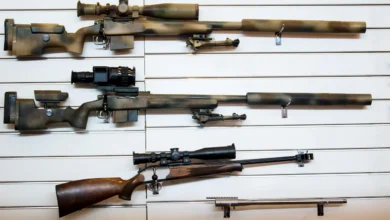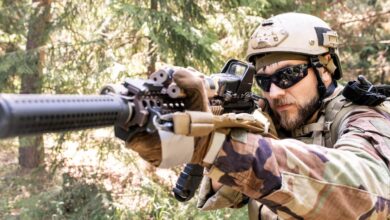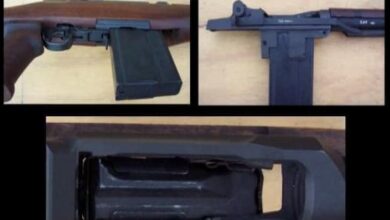Introduction
In the shadowy world of long-range warfare, few roles inspire awe and debate like that of the sniper. From World War I trenches to modern conflicts in Ukraine, these elite marksmen have turned the battlefield into a game of precision, patience, and physics. The title of “world’s longest sniper shot” is both a technical marvel and a symbol of a sniper’s ultimate reach. This blog explores the history, technology, record-breaking shots, and controversies surrounding the longest sniper kills ever recorded.
The History of Snipers in the Armed Forces
Though the concept of long-distance shooting can be traced back centuries, modern sniping began in earnest during World War I. British and German forces employed trained sharpshooters to eliminate key targets from concealed positions. In World War II, sniping became even more strategic, with famed Soviet sniper Vasily Zaitsev killing hundreds during the Battle of Stalingrad.
Post-WWII, the sniper became a formalised role in military organisations. The Vietnam War saw American snipers like Carlos Hathcock dominate, and Cold War training led to elite sniper schools like the U.S. Marine Corps Scout Sniper School and the British Army’s Sniper Division.
Today, snipers are highly trained in ballistics, camouflage, and fieldcraft. Their importance has only grown with asymmetric warfare, where snipers often act as both eyes and executioners on the battlefield.
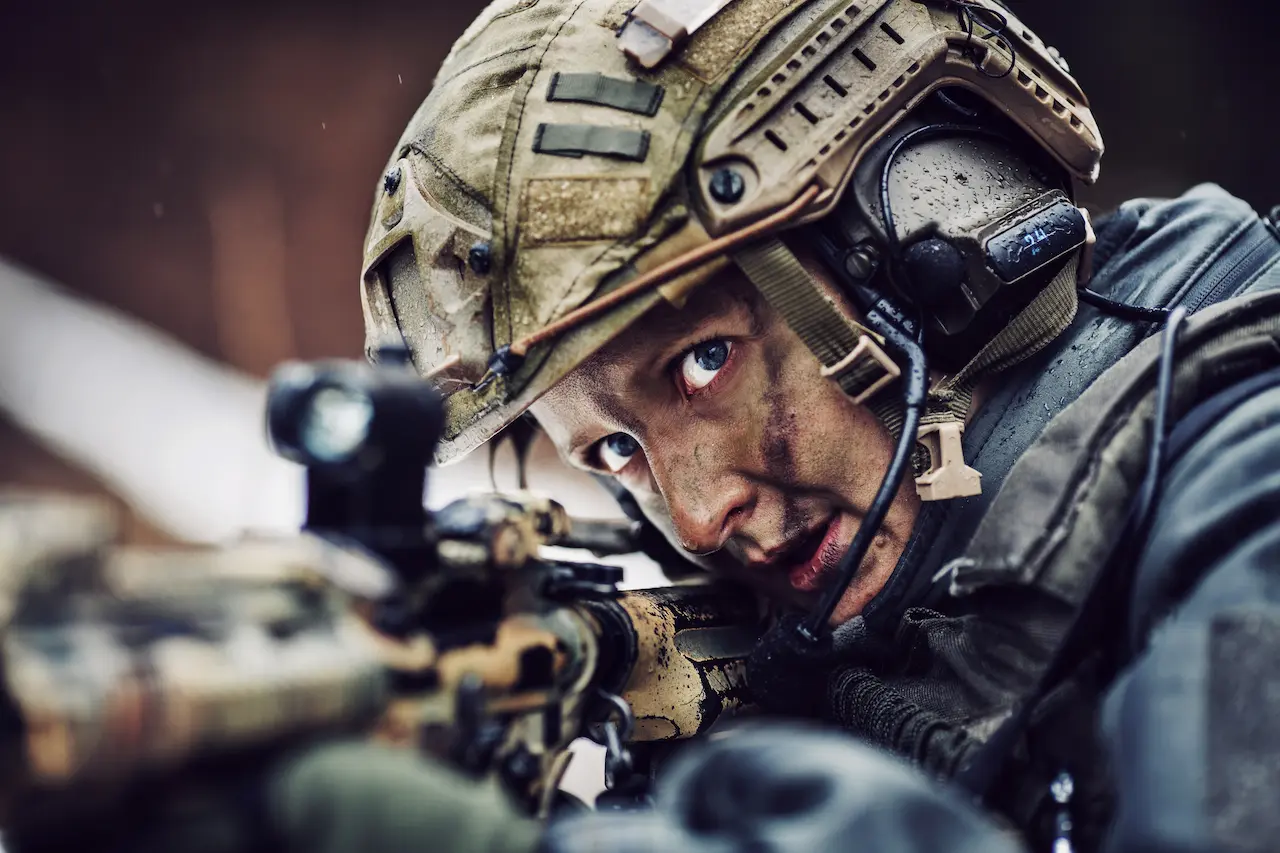
Evolution of Sniper Rifles
Early sniper rifles were modified standard-issue rifles with scopes. Over time, militaries began to develop purpose-built rifles. Key milestones include:
Lee-Enfield (WWI/WWII) – Widely Used by British Forces
The Lee-Enfield, specifically the SMLE (Short Magazine Lee-Enfield) variants Mk III and Mk IV, served as the backbone of British infantry and sniper units during both World Wars. Renowned for its bolt-action speed and robust construction, it featured a 10-round magazine, which was exceptional for its time. As a sniper platform, the Lee-Enfield was typically outfitted with a scope and selected for accuracy, allowing trained marksmen to engage targets at medium to long ranges. While not purpose-built as a sniper rifle, its reliability and high rate of fire made it a solid choice for sniping duties in trench warfare and battlefield conditions.
M40 (Vietnam) – Adopted by U.S. Marine Corps
The M40 sniper rifle, introduced during the Vietnam War, marked a significant step in the standardisation of sniper rifles in the U.S. Marine Corps. Based on the Remington 700 bolt-action rifle, the M40 offered excellent accuracy and was paired with a Redfield scope for enhanced target acquisition. Its chambering in 7.62×51mm NATO made it effective at ranges up to 800–1000 metres, depending on the shooter’s skill. The M40’s precision and dependability in the dense jungles and varied terrain of Vietnam helped solidify its place in modern sniper doctrine, and it would go on to evolve through several upgraded variants (M40A1–M40A6).
Dragunov SVD – Soviet Semi-Automatic Sniper Rifle
The Dragunov SVD (Snayperskaya Vintovka Dragunova), developed in the 1960s, was designed as a designated marksman rifle rather than a true sniper rifle. Unlike bolt-action counterparts, it featured a semi-automatic action, allowing for faster follow-up shots. Chambered in the powerful 7.62×54mmR cartridge and equipped with a PSO-1 scope, the SVD offered effective engagement out to 800 metres, making it suitable for squad-level support roles in the Soviet and later Russian military doctrine. While not as precise as Western bolt-action rifles, the SVD’s durability, ruggedness, and combat adaptability have ensured its continued use across global conflicts.
Barrett M82A1 – Anti-Materiel Concept with a .50 BMG Calibre
The Barrett M82A1 redefined the role of snipers by introducing the concept of anti-materiel operations. Chambered in .50 BMG (12.7×99mm NATO), this semi-automatic rifle was designed not just to neutralise personnel but also to disable vehicles, radar systems, and other high-value equipment. With effective ranges exceeding 1,800 metres, the M82A1 delivers tremendous stopping power and penetration. While heavier and less maneuverable than traditional sniper rifles, its impact on battlefield strategy has been profound, and it remains in service with numerous armed forces around the world. It’s also famously featured in films and documentaries highlighting extreme long-range kills.
McMillan TAC-50 – Used by Canadian Forces in Record-Breaking Shots
The McMillan TAC-50 is a bolt-action anti-materiel sniper rifle that has earned global recognition for its accuracy and long-range performance. Chambered in .50 BMG, it became a legend when a Canadian sniper used it to eliminate a target at 3,540 metres in Iraq in 2017—the longest confirmed sniper kill in history. The TAC-50 is designed for precision, using a heavy match-grade barrel and advanced optics, typically employed in specialised roles where extreme distance and stopping power are critical. It is known for delivering consistent sub-MOA (minute of angle) accuracy, making it a staple in elite sniper units across NATO forces.
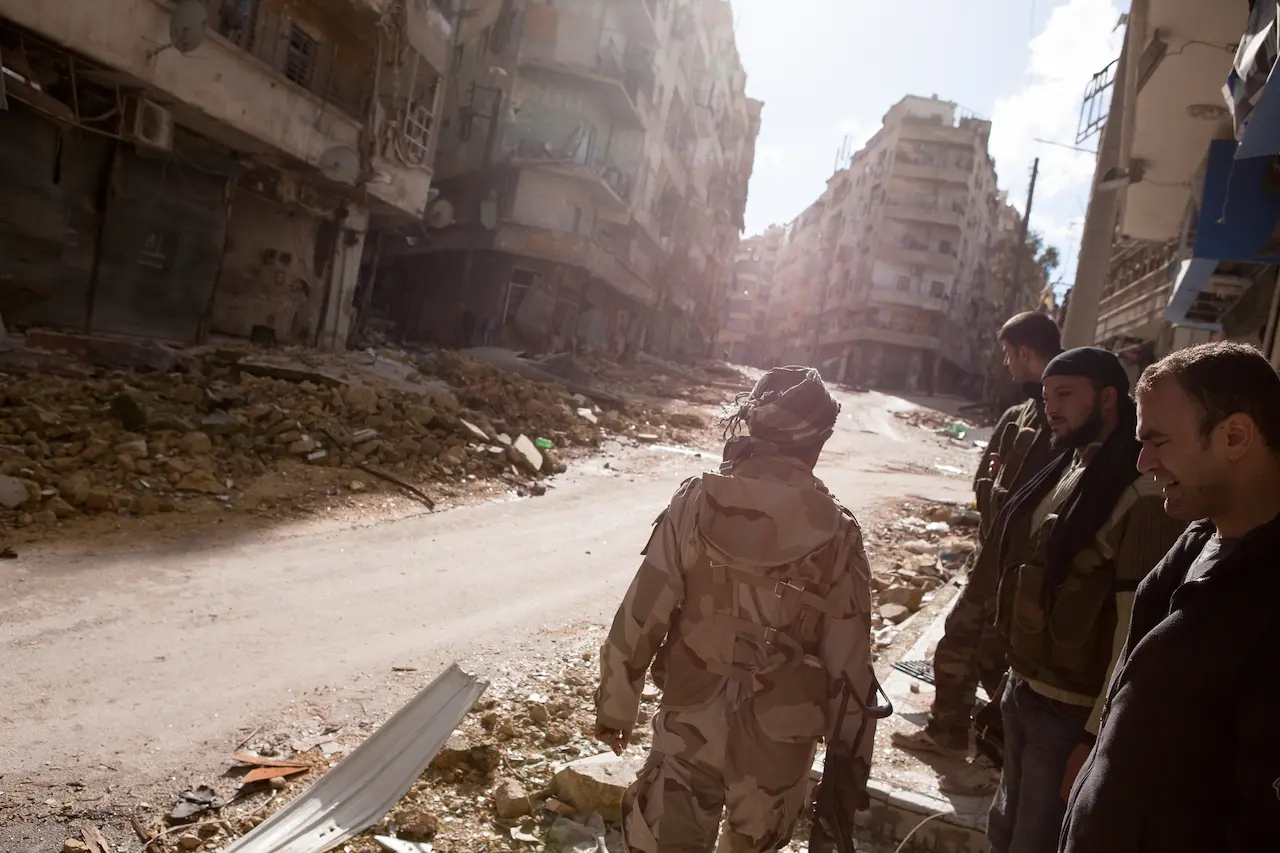
L115A3 – British Rifle Used by Craig Harrison
The L115A3, part of the Accuracy International Arctic Warfare series, is a bolt-action sniper rifle chambered in .338 Lapua Magnum. It gained fame when British Army sniper Craig Harrison used it to record one of the longest confirmed sniper kills at 2,475 metres in Afghanistan. Designed for precision, range, and reliability, the L115A3 features advanced optics, a sound suppressor, and a folding stock for portability. The .338 Lapua Magnum cartridge offers a superior ballistic profile, balancing power and accuracy for long-range engagements. The L115A3 remains a flagship sniper weapon in British and other NATO forces due to its high-performance design.
Snipex Alligator & Horizon’s Lord – Ukrainian Anti-Materiel Rifles Pushing Range Boundaries
The Snipex Alligator and Horizon’s Lord are cutting-edge anti-materiel sniper rifles developed by Ukraine’s XADO-Holding. These large-calibre, bolt-action rifles are chambered in 14.5×114mm and 20×102mm, respectively—ammunition typically used in heavy machine guns or autocannons. Their design prioritises extreme range, firepower, and armour-piercing capability. These rifles can engage soft-skinned vehicles, light armour, and fortified positions at distances well beyond 2,000 metres. With enormous muzzle energy and specialised optics, they represent a new class of ultra-long-range sniper systems, especially valuable in modern conflicts involving drone warfare and static enemy positions. They signal a shift in sniper technology towards hybrid anti-materiel/long-range platforms.
Modern sniper rifles are modular, more powerful, and designed to accommodate various optics, suppressors, and even custom ammunition.
Countries Known for Elite Snipers
While nearly all military forces have sniper units, several countries stand out for their expertise:
Canada – JTF-2 and Record-Holding Snipers
Canada’s elite special operations unit, Joint Task Force 2 (JTF-2), is a highly classified branch of the Canadian Special Operations Forces Command (CANSOFCOM). Known for counter-terrorism, reconnaissance, and direct action missions, JTF-2 has also developed some of the most skilled snipers in modern military history. In 2017, a JTF-2 sniper set the world record for the longest confirmed sniper kill at 3,540 metres during operations in Iraq. Canadian snipers are known for their exceptional training, marksmanship, and composure under pressure—traits fostered within a military culture that emphasises precision and discipline in extreme conditions.
Ukraine – Exceptional Long-Range Marksmen in Modern Conflict
The Armed Forces of Ukraine, particularly their special operations units and elite sniping teams, have demonstrated remarkable skill in long-range marksmanship during the ongoing conflict with Russia. Ukrainian snipers, often trained under NATO-aligned doctrines or through domestic special forces programs, have adapted to the fluid and harsh realities of modern warfare, especially in urban and trench environments. With the use of advanced optics, indigenous rifles like the Snipex series, and battlefield innovation, Ukrainian marksmen have earned recognition for making some of the longest shots in combat in recent years, pushing the envelope of precision shooting in real-world conflict.
United States – Legendary Snipers and Advanced Training
The United States Armed Forces, particularly the U.S. Marine Corps and U.S. Army, are renowned for producing some of the most iconic snipers in military history. Figures like Carlos Hathcock, who served in Vietnam, and Chris Kyle, known as the deadliest sniper in U.S. history, are central to American sniper lore. U.S. sniper training is rigorous, with institutions like the Marine Corps Scout Sniper School and Army Sniper School focusing on fieldcraft, concealment, ballistics, and psychological resilience. American snipers operate with cutting-edge gear and benefit from vast operational experience, making them formidable assets on the battlefield.
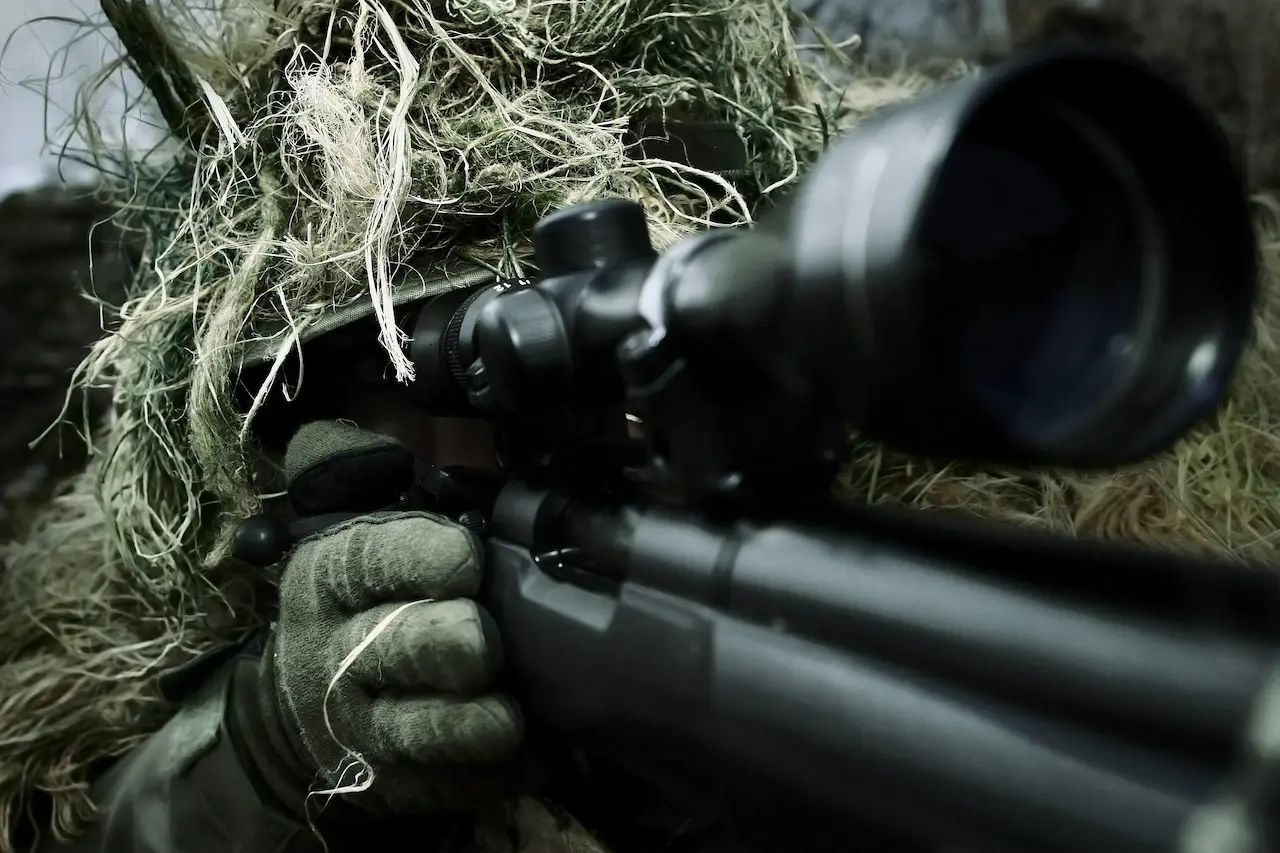
United Kingdom – British Army’s World-Class Sniper Program
The British Army is home to one of the world’s most respected sniper training programs, rooted in tradition and refined through decades of experience. British snipers are trained at the Infantry Battle School in Brecon, Wales, where the focus is placed on stealth, patience, precision, and independent operation. The UK has produced world-renowned sharpshooters like Corporal Craig Harrison, who held the record for the longest confirmed kill at 2,475 metres. British forces prioritise long-term endurance and fieldcraft, ensuring their snipers are as mentally resilient as they are technically proficient.
Australia – Long-Range Shooting Excellence and Coalition Operations
The Australian Defence Force (ADF), particularly through its Special Air Service Regiment (SASR) and Commandos, has developed a strong reputation for long-range shooting expertise. Australian snipers have contributed to coalition operations in Afghanistan and Iraq and have held places among the top confirmed long-range kills in military history. Australian military sharpshooters benefit from rigorous bushcraft training and marksmanship developed in diverse and challenging environments. Their ability to work effectively in multinational operations, coupled with a deep understanding of terrain and camouflage, positions Australian snipers as among the most capable in the world.
Russia – WWII Sniper Legends and Modern Tactics
Russia’s military, particularly its ground forces and Spetsnaz units, has a storied history of sniper warfare dating back to World War II. Soviet snipers such as Vasily Zaitsev and Lyudmila Pavlichenko became legendary for their exploits during the Battle of Stalingrad, with kill counts that still influence sniper training today. In the modern era, Russia continues to refine counter-sniper tactics and equip its forces with rifles like the Dragunov SVD and the more recent Lobaev Arms models. Russian doctrine places significant emphasis on battlefield deception, patience, and rapid adaptation—key traits in their enduring sniper legacy.
Top 20 Longest Confirmed Sniper Kills
- Viacheslav Kovalskyi (Ukraine, 2023) – 3,800 m (12,467 ft)
- Unnamed Canadian Sniper (Iraq, 2017) – 3,540 m (11,614 ft)
- Australian Sniper (Afghanistan, 2012) – 2,815 m (9,235 ft)
- Ukrainian National Guard (Ukraine, 2022) – 2,710 m (8,891 ft)
- Craig Harrison (UK, 2009) – 2,475 m (8,120 ft)
- Rob Furlong (Canada, 2002) – 2,430 m (7,972 ft)
- Arron Perry (Canada, 2002) – 2,310 m (7,579 ft)
- Brian Kremer (USA, 2004) – 2,300 m (7,546 ft)
- Carlos Hathcock (USA, 1967) – 2,286 m (7,500 ft)
- South African SF (DRC, 2013) – 2,125 m (6,972 ft)
- Finnish Sniper (Winter War) – 1,500+ m (estimate)
- Soviet WWII Snipers – Numerous kills above 1,200 m
- Chris Kyle (USA) – Longest shot: 1,920 m
- U.S. Army Ranger (Afghanistan) – 1,900 m
- British Sniper (Iraq) – 1,850 m
- French Foreign Legion (Afghanistan) – 1,800 m
- German KSK (Afghanistan) – 1,780 m
- Polish GROM (Iraq) – 1,750 m
- USMC Sniper (Iraq) – 1,700 m
- Turkish SF (Syria) – 1,650 m
Types of Bullets Used for Long Sniper Shots
A successful sniper shot at extreme distances requires ammunition that is:
- Aerodynamically stable
- Supersonic over long ranges
- Heavy enough to resist wind drift
Common sniper calibres include:
- .338 Lapua Magnum – Used by British L115A3.
- .50 BMG (12.7x99mm) – Used in Barrett and McMillan rifles.
- 12.7x114mm – Ukrainian Horizon’s Lord.
- 14.5x114mm – Used in Snipex Alligator.
These rounds are specially manufactured for consistency and minimal deviation, often hand-loaded for elite units.
Famous Sniper Rifles
- McMillan TAC-50 – Canadian record-holder.
- Barrett M82A1 – Popular with U.S. and allies.
- L115A3 – British long-range standard.
- Snipex Alligator – Ukrainian innovation.
- Volodar Obriyu (Horizon’s Lord) – Claimed record-holding rifle.
Hollywood’s Take on Long Sniper Shots
Movies have often dramatized sniper stories:
- American Sniper (2014) – Chris Kyle’s life and record kills.
- Enemy at the Gates (2001) – Battle of Stalingrad and Vasily Zaitsev.
- Shooter (2007) – Inspired by Hathcock and modern tactics.
- The Day of the Jackal (2024, Peacock) – Fictional 3,815 m shot, eerily close to real records.
Though fictionalised, these portrayals draw attention to the complexity and high stakes of sniping.
Conflicting Reports: Who Holds the Real Record?
While Ukrainian sniper Viacheslav Kovalskyi holds the publicly confirmed record at 3,800 m, there is some debate:
- Verification Issues – Relying on video, telemetry, and third-party confirmations is hard in war zones.
- Canadian Sniper’s 2017 Shot – Widely accepted due to JTF-2 credibility and video evidence.
- Ukraine’s Horizon’s Lord – Debate surrounds the bullet’s trajectory and conditions.
As no global database tracks sniper shots officially, discrepancies remain. Factors like weather, rifle calibration, and target movement can obscure confirmation.
Conclusion
Sniper warfare has evolved from black-powder duels to science-backed long-distance engagements. The modern sniper operates at distances once thought impossible, and the arms race to break the next record continues. Whether it’s Canadian precision, Ukrainian innovation, or American legacy, each record tells a story of discipline, engineering, and human skill. As wars evolve and rifles become more advanced, it may not be long before the line between fiction and reality vanishes completely.
The world’s longest sniper shot is more than just a number—it’s a symbol of what’s possible when the edges of science, skill, and warfare converge.

